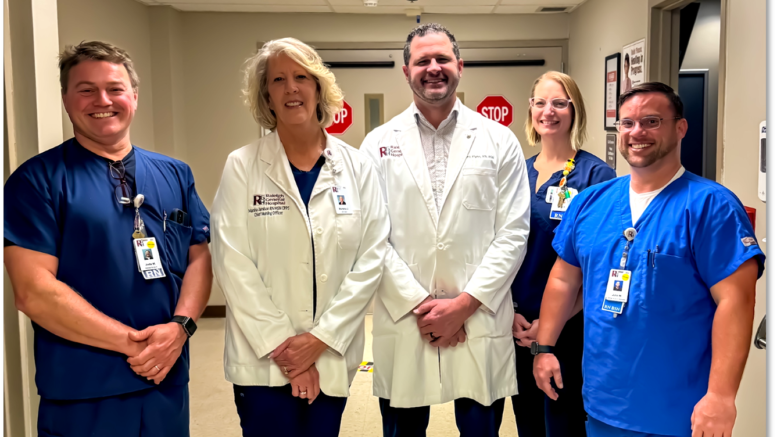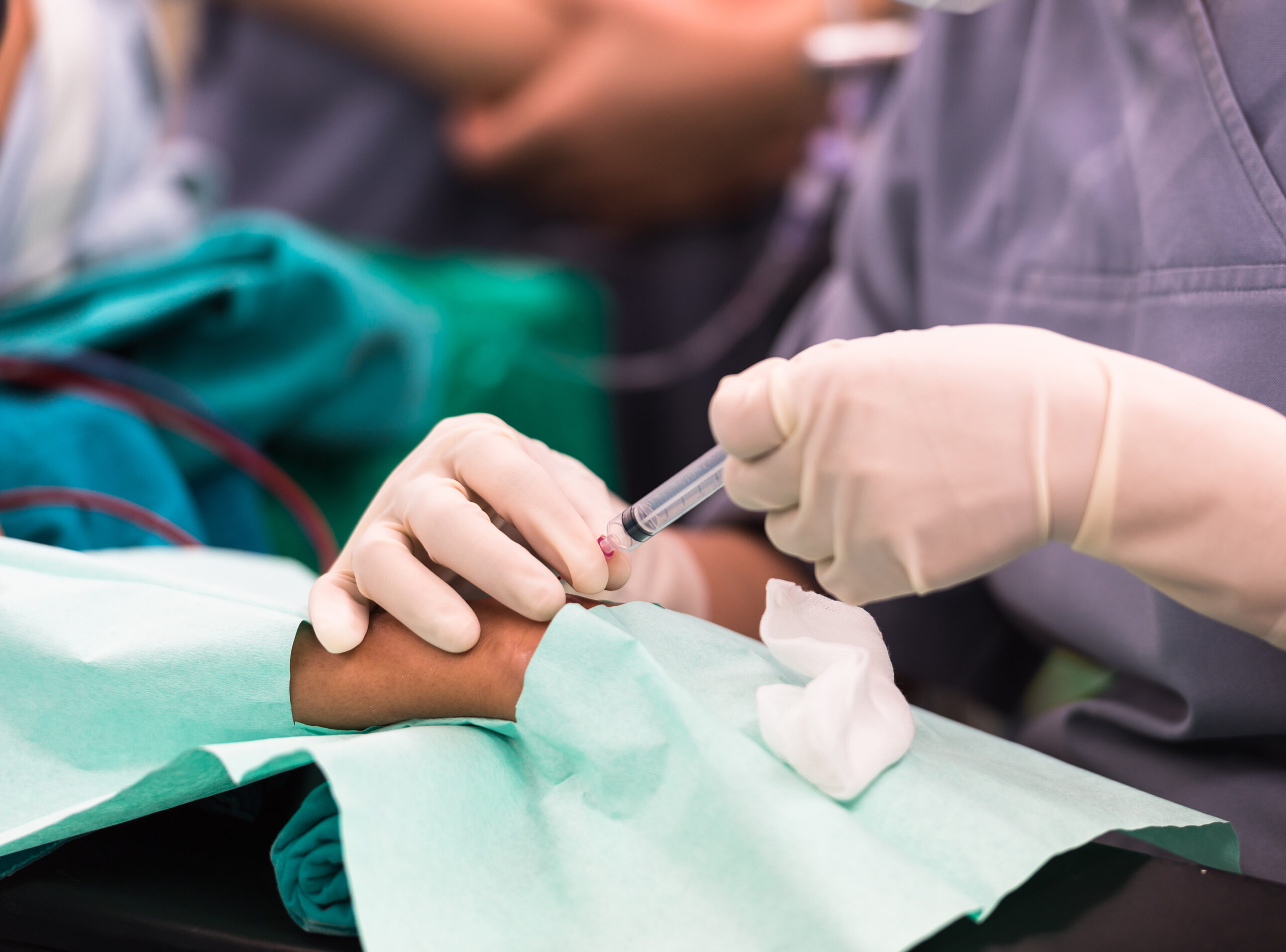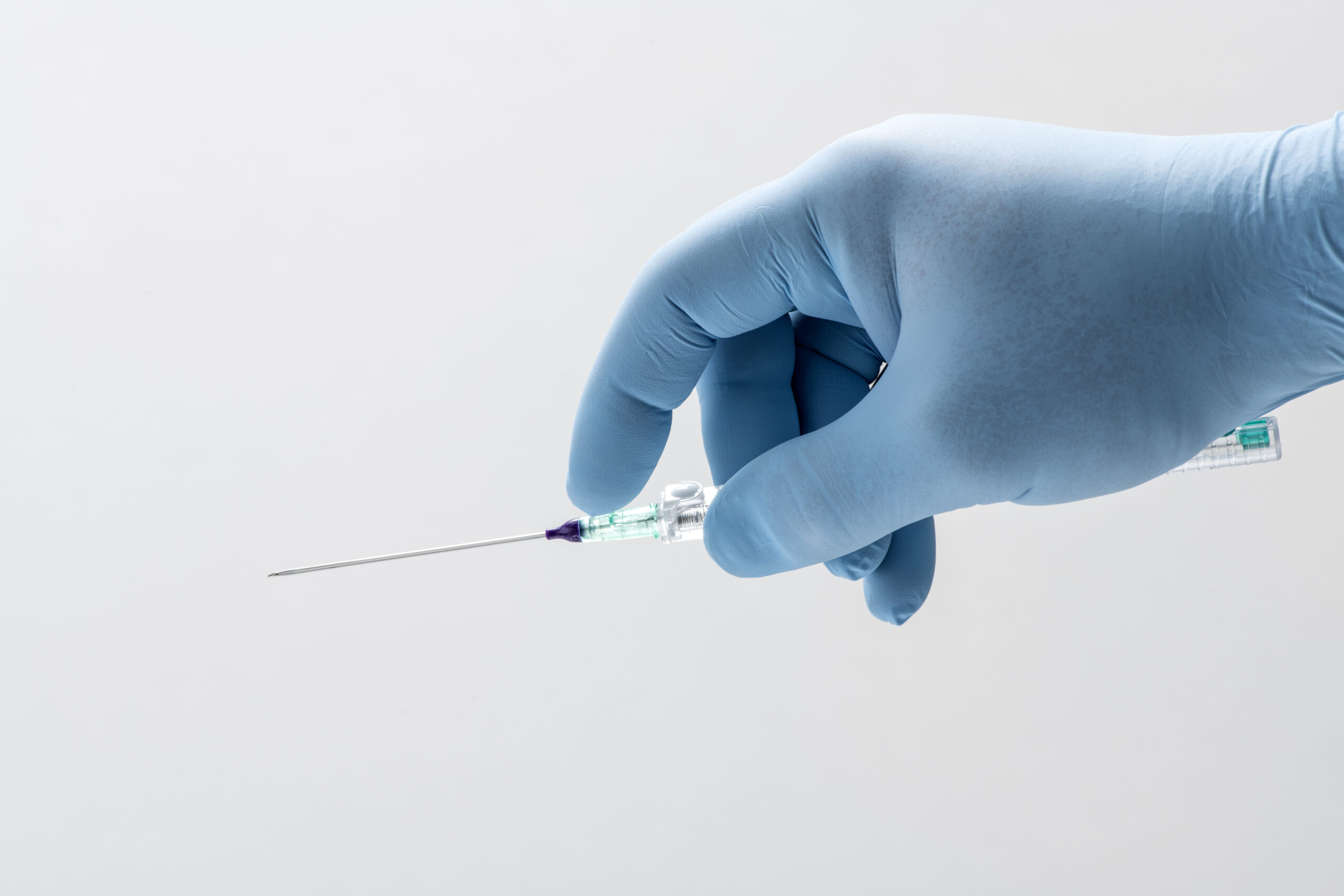The Importance of Vascular Access and Recent Advancements
Vascular access is a critical component of medical care that allows for the delivery of fluids and medications to patients through the insertion of a peripheral or central vascular access device (VAD) into a blood vessel [1, 2]. Hundreds of millions of VADs are inserted in the United States alone each year [3]. Given the frequency of vascular access in healthcare settings, there may be a high opportunity for risk if not managed properly. Complications arising from catheters have been reported in up to 42% of patients, including common issues such as phlebitis, infiltration, occlusion, extravasation, and catheter-related bloodstream infections (CLABSIs). These complications can also lead to significant increased costs for healthcare facilities [4].
Inconsistencies in policy, practice, training, and device selection may contribute to poor vascular access outcomes [5]. Given these challenges, healthcare facilities frequently implement quality improvement initiatives to enhance their vascular access protocols and the quality of training provided to practitioners. An in-depth assessment can be a useful first step in addressing a facility’s specific needs to drive sustainable improvement of policies, practices, and standardization of products across the institution.
This case study covers the facilitation of a comprehensive vascular access management (VAM) assessment at Raleigh General Hospital, and the subsequent quality improvement initiatives which refined vascular access practices to minimize risks. We aim to share both best practices and lessons learned from the VAM process at Raleigh General to serve as guidance for facilitation of these processes in other institutions nationwide.
Background of Raleigh General Hospital
Raleigh General Hospital (RGH) is a 300-bed full-service institution located in Beckley, West Virginia. RGH is owned by Lifepoint Health, a healthcare delivery network which oversees 62 acute care hospitals and other healthcare facilities in non-urban communities across the country. RGH is home to the highest-rated hospital emergency department in southern West Virginia and offers a diverse portfolio of inpatient and outpatient services to nearly 13,000 patients annually [6].
VAM Assessment and Opportunities for Improvement
Similar to many hospitals and health systems across the US, Raleigh General had experienced historic challenges with vascular access care related to provider assignments, internal policies and protocols, and devices used across the facility [7, 8]. RGH leadership therefore sought out a device vendor (BD, Franklin Lakes, NJ) to gain a better understanding of problems with the current standard of care. The BD team conducted a VAM assessment in collaboration with the RGH stakeholders, which is a uniquely integrated approach to vascular access care, combining clinical practice assessments, device portfolio considerations, and expert clinical training/education.
At RGH, the VAM assessment included a review of clinical charts, an evaluation of the rationale behind line placements, documentation of the number of needlesticks required prior to success, as well as an overview of other hospital performance metrics. Furthermore, BD conducted on-site interviews with hospital staff to gain insight into the current vascular access processes, including challenges for staff and leadership. Daily monitoring took place to observe patient care quality and safety throughout the VAM assessment process. This included observations of line conditions, dressing states, and infusions to identify inconsistencies in line selection, including in difficult venous access (DVA) patients. This thorough evaluation initiated a multi-year partnership between RGH and BD, and revealed opportunities to improve vascular access practices related to personnel utilization, in-house policies and protocols, and device utilization to improve outcomes for the facility.
Vascular Access Personnel: Various staff members played a role in vascular access at Raleigh General prior to the VAM assessment. Bedside nurses were responsible for peripheral IV placements, while physicians, including a dedicated vascular surgeon, managed all central line insertions. However, there was limited knowledge among staff regarding different vascular access options, resulting in above-average central line utilization.
In addition, RGH faced shortages of personnel qualified to assist in line insertions and maintenance. As a result, beginning in 2022 RGH contracted a third-party line placement company to manage all peripherally inserted central lines. In this process, in-house nurses would contact the third-party service for line placement, and a specialized nurse was dispatched to RGH within 24 hours of the request. The reliance on external contractors contributed to challenges such as delays to line placement, delayed patient discharges, inappropriate line usage, increased expenses, and unimproved infection rates. The persistent challenge with the third-party coincided with outreach to BD, and the relationship with the third-party was terminated around the start of the assessment.
Techniques and Policies: The VAM also assessed daily practice for inserting and maintaining lines compared to best practices. Of particular focus were items such as proper site selection and adherence to antiseptic techniques. For minimizing infection risk and ensuring device longevity, peripheral intravenous catheters should be placed in the forearm, hand, or upper arm, and central VADs in the chest or upper arm. During the VAM, variations from site selection were observed, in part due to unique clinical or patient situations.
Another key step in reducing infection is maintaining aseptic techniques to keep the VAD free of contaminants. The VAM observed some deviation from best practice recommendations, as well as opportunities for re-education to strengthen adherence to these protocols.
Technology and Products Utilized: Lastly, the VAM paid particular attention to the use of vascular access products and devices at RGH. The assessment highlighted a lack of VAD standardization, particularly in midlines, peripheral IVs, and peripherally inserted central catheters (PICCs). There was a wide variety of redundant VADs available for provider use that could potentially lead to inconsistencies in device and component selection. The lack of standardization created issues with device compatibility, impacting workflow efficiency and increasing training requirements on the hospital floor.
In addition, for DVA patients, advanced techniques such as ultrasound guidance can be a valuable tool to facilitate vascular access. However, few RGH clinicians were trained in this technique, thereby limiting the process that would yield the best clinical outcomes.
In total, the above factors contributed to a vascular access practice characterized by heavy reliance on central lines, lower than recommended dwell times, and above-average CLABSI rates at the time of the initial VAM assessment. However, the assessment helped set a baseline and the findings informed the development and pilot of various initiatives in the following years, aiming to refine vascular access practices and improve patient outcomes.
Redefining Vascular Access Management: Change Management Initiatives
Marsha Jamison, CNO at Raleigh General, established core objectives for enhancing patient care and operational efficiency based on the findings of the assessment. These included reducing central line usage to only when deemed necessary, decreasing infection rates, improving patient satisfaction, and minimizing blood contamination for frontline nursing staff. These key objectives guided the development of three main initiatives that followed the VAM assessment.
Vascular Access Team
A key initiative following the assessment was the formation of a vascular access team (VAT). These teams, comprised of vascular access specialists with advanced knowledge and skills in VAD insertion and management, are a crucial tool to optimizing patient outcomes. Contrasting with a generalist approach, the implementation of VATs with specialized experts is associated with higher first-time insertion rates, contributing to enhanced patient satisfaction and reduced institutional costs [3].
The establishment of a VAT at RGH marked a significant step towards assuming full internal accountability for vascular access management. This in-house team, composed of three nurses under the Director of Critical Care/Vascular Access, was carefully selected based on their expertise in care, technical proficiency, and critical thinking abilities. The VAT received specialized training, including a comprehensive week-long training session led by a BD field educator specializing in catheter insertions. After the VAT became proficient in their initial PICC line training, the field educator returned to RGH to teach on additional line insertions, including midlines, to leverage vessel visualization and ensure optimal line matching for patients. The VAT focused on vascular access management and education following the completion of their training. Alongside completing all vascular access consultations and VAD insertions, the VAT team performed daily rounds and monitored patients’ lab results to detect any signs of infection. The VAT remained committed to maintaining high-level knowledge on both vascular access and infection control throughout the facility via continuous education efforts.
During their routine rounds, the VAT encountered various vascular access challenges which they leveraged as educational opportunities for hospital staff. This involved:
- Providing technique corrections to ensure proper device usage.
- Advising appropriate site selection.
- Building comprehensive dressing kits to optimize patient care and outcomes.
- Facilitating trainings on the hospital floors for frontline nursing staff.
- Collaborating with the education department to integrate the new vascular access practices into new-hire training sessions.
Throughout the entirety of the VAT education process, the BD field educator facilitated ongoing communication and support with the device supplier, ensuring adherence to product best practices and protocols. By dedicating these resources to in-house vascular access expertise, RGH could better align with hospital quality metrics, evolve vascular access practices, and provide comprehensive education for providers.
Implementing Policy Change
In parallel with VAT development, the CNO, ACNO, and Director of Critical Care/Vascular Access sought to enhance hospital policy by implementing evidence-based protocols and best practices in vascular access. One of the first policy changes instituted stricter criteria for central line usage. These criteria required provision of rationale for both the placement and continued utilization of central lines, ensuring that lines were only inserted when deemed appropriate and were promptly removed when no longer necessary. The goal of this change was to address inconsistencies in patient care practice. For instance, patients being discharged with PICC lines must now meet specific requirements to ensure appropriate line utilization.
The CNO, ACNO, and Director of Critical Care/Vascular Access strived to achieve first-time insertions and zero CLABSIs. Additional protocols aimed to standardize hospital policies to improve patient outcomes and lower the overall rate of central line utilization. For example, despite the CLABSI rate falling below national averages, the CNO instituted a policy to conduct root cause analyses on any infections that did occur to understand how to prevent them in the future. These facility-wide policy changes were designed to not only improve patient outcomes but also enhance patient satisfaction and minimize discomfort through improving first-time insertion rates and reducing needlesticks.
Leadership and the VAT worked tirelessly to ensure compliance with these new guidelines. Some providers were hesitant to accept the new changes due to their longstanding clinical practice of central line usage. However, leadership across the facility and BD worked closely to ensure a smooth transition. To encourage uptake of policies, educational sessions were organized by the BD team to guide physicians through the vast breadth of capabilities and applications of VADs. RGH nursing leadership facilitated an open and transparent dialogue to convey the need and evidence for policy changes. Lastly, the VAT initiated daily hands-on monitoring and rounds to ensure line patency and oversee the transition.
Leadership at RGH sought to harmonize the inconsistencies in device and material use that may have contributed to poorer outcomes. The lack of standardization had previously disrupted workflow, as significant time was spent locating compatible components. Leadership and the VAT collaborated to standardize the brands of supplies to reduce the risk of device mismatch. RGH adopted standardized midline catheters, IV catheters, PICCs, and needleless connectors based on the field educator’s recommendations. This standardization effort also involved the adoption of improved peripheral intravenous lines to minimize blood exposure to providers, along with the introduction of a positive pressure needle-free connector. This assisted in minimizing infection risk by reducing the amount of blood reflux into the needle-free connectors. The new practices for device selection prioritized the patient’s best interest and optimized clinical outcomes.
Despite these successful efforts to narrow device variation, a setback occurred when a preferred device, known for its superior clinical outcomes, was removed from the hospital’s supply chain due to cost considerations. Nursing leadership advocated for the reinstatement of the preferred device by using compelling data that highlighted its effectiveness. Nursing leaders’ transparency and expertly guided efforts resonated with hospital leadership and despite its higher associated costs, the preferred device was made available to ensure that providers could continue delivering optimal patient care.
Measuring Effectiveness: The Impact of the VAM Assessment Initiatives
The implementation of these new initiatives resulted in direct improvements at RGH. The impact was observable through improved patient outcomes, heightened workflow efficiency, a favorable cultural transformation, and positive economic outcomes.
Clinical Outcomes
Together, all of these interventions contributed to enhancing patient outcomes. The VAT provided a remarkable improvement in response times for line placements due to their accessibility and proximity to the patients. Unlike the previous third-party service, where line placement could take up to 24 hours, the VAT ensured placement within just one hour of consultation, which eliminated unnecessary discharge delays. Additionally, there was a decrease in multiple device utilization due to VAD standardization efforts. The effectiveness of these changes was particularly evident through the significant reduction of CLABSI incidents within the first two years of implementation. In addition, the reduced infection rates and fewer needlesticks enhanced overall patient satisfaction and comfort, shown in positive patient feedback given to the VAT.
Cultural and Workflow Outcomes
The newly adopted policies at RGH prompted a remarkable transformation in staff culture and workflow despite the initial reservations. The supply standardization policies facilitated an easier decision-making process that allowed staff to readily choose compatible devices. Besides having access to standardized devices, the hospital staff were also now equipped with the necessary training and knowledge to select the appropriate lines for insertion, thereby enhancing overall hospital efficiency. This new working culture emphasized the importance of having skilled and actively involved vascular access staff.
In response to this cultural shift and increase in responsibilities for vascular access care, nurses felt a greater sense of ownership over clinical decisions. There was a notable increase in ownership among hospital staff to enhance patient care and reduce infection rates, a sentiment celebrated through a regularly distributed nursing newsletter. This led to improved outcomes for patients and heightened satisfaction among nurses themselves. Furthermore, this fostered a culture of continuous learning by not only boosting performance but also cultivating a sense of engagement and investment among employees dedicated to delivering exceptional patient care.
Economic Outcomes
While the primary goal of the VAM assessment was to pinpoint opportunities for clinical enhancements, RGH leadership noted several economic impacts from the resulting initiatives. Though not precisely quantified, the reduction in CLABSI rates led to substantial cost savings for RGH through avoiding infection treatment costs. Furthermore, discontinuing the use of the third-party agency, which charged the hospital per line inserted, contributed to additional savings while simultaneously improving efficiency and staff ownership by enabling RGH providers to independently select VADs, place, and maintain the lines. The hospital’s adoption of standardized materials and devices facilitated refined purchasing practices and further enhanced financial benefits across the organization.
Sustaining the Initiative: Elements Crucial to Long-term Success
Enhancing patient outcomes through specialized care has transformed clinical and operational processes at RGH. Initiating the process with a hands-on assessment has proven to be instrumental in identifying areas of improvement and implementing targeted solutions. The success observed from the initiatives following the VAM has provided invaluable learnings, which will serve as the foundation for future improvements as RGH’s collaboration with BD continues.
Continuous Leadership Involvement and Transparent Communication
The success of these initiatives can be attributed in part to the consistent efforts of the CNO, ACNO, and Director of Critical Care/Vascular Access. Having support from leadership is paramount for provider success and delivering quality care, and the effective leadership from RGH fostered a culture of trust, transparency, and collaboration, empowering employees to take initiative and overcome challenges. With clear priorities and the best interest of patients and providers in mind, leadership were unwavering in their support for large improvement efforts such as the formation of the VAT.
Additionally, their transparency throughout the decision-making process facilitated clear communication and discussion between leadership and staff. Leadership ensured that nurses understood the “why” behind the changes and the benefits for patients to help address the initial pushback. Emphasizing a mutual goal, patient well-being, aligned everyone’s effort to a common cause. RGH’s leadership remained committed not only to ensuring a smooth transition for providers but also to fostering the development of leaders and advocates at the bedside.
Encouraging Staff Ownership and Culture of Patient Stewardship
Encouraging staff ownership at RGH was crucial to develop employees’ sense of autonomy, accountability, and pride in the quality of their patients’ care. For RGH, staff ownership helped to cultivate continuous improvement in clinical workflow and enabled employees to expand their responsibilities. The quality improvement implementations were a pivotal step in empowering staff members to take the lead in vascular access initiatives.
The active involvement of frontline staff throughout the VAM process yielded numerous benefits. Encouraging nurse ownership over their patients’ vascular access care resulted in improved decision-making, reduced unnecessary lines, and enhanced patient care. Ensuring that all team members were educated and knowledgeable about relevant protocols fostered an environment conducive to positive change. By engaging the workforce and making them feel like leaders in the process, there has been a notable shift in ownership and commitment at RGH. Looking ahead, it is crucial to recognize that building a culture where nurses feel highly utilized and motivated enables them to embrace significant cultural shifts.
Collection and Evaluation of Data to Create Best Practices
Evidence-based practice is essential to ensure the delivery of high-quality, effective, and safe services. By integrating evidence from literature in conjunction with clinical expertise, RGH made informed decisions to enhance clinical care.
RGH’s commitment to data-driven improvement was integral to improving care quality. This commitment entailed ongoing data monitoring, regular assessment of practices, and openness to implementing additional changes. The VAT team monitoring labs for every PICC line following insertion allowed for the collection of real-world data to serve as reference points in providing best practices and avoiding infection. By refining protocols and incorporating data monitoring, RGH ensured compliance with internal quality metrics, facilitating continuous improvement in patient care.
Commitment to Continuous Improvement
Building on the initial successes, RGH remains committed to continuous evolution and improvement of vascular access practice. Following the initial VAM assessment, RGH and BD have continued their collaboration, as seen through additional follow-up assessments to track progress, implementation of additional protocols and VADs, and commitment to continuous education to refine vascular access practice at RGH. These regular assessments have allowed the teams to identify new ways to strengthen vascular access care at RGH, and show the benefits of continuous evaluation and close collaboration between providers and device vendor.
Concluding Thoughts
Improving vascular access management requires a thorough assessment of all pieces of the current standard of care. In this case, the VAM assessment served as an invaluable tool, offering insights that helped minimize clinical complications, ensure the proper selection and maintenance of devices, and refine protocols for care delivery. By systematically evaluating and improving upon these aspects, healthcare providers can enhance patient safety and optimize outcomes.
The comprehensive VAM assessment led to the establishment of a vascular access team, protocol refinement, and product standardization at Raleigh General Hospital. All these initiatives aided in reducing hospital-wide infection rates and enhancing patient quality of care. In illustrating these points, this case study serves as a compelling example of the transformative impact that well-designed quality improvement initiatives can have on a facility. By partnering with a vendor and taking a holistic approach of first identifying challenges in current practice, BD and RGH were able to develop evidence-based, actionable solutions to evolve standard of care.
Despite facing initial resistance, the successful implementation of new teams, protocols, and devices underscores the adaptability and resilience of this healthcare organization. Through effective leadership, clear communication, and a commitment to patient-centric care, RGH providers embraced necessary changes to enhance patient outcomes and satisfaction. As such, this case study underscores the importance of assessing current practices to seek continuous improvement in healthcare delivery.
Acknowledgements
Research and editorial support was provided by Halit O. Yapici, MD, MBA, MPH, Nick Bettencourt, BS, and Julia Bogart, BSPH of Boston Strategic Partners (funded by BD).
Article by:
Shannon Hillyer, RN, BSN, CRNI, Director of Global Customer Solutions, Medical Delivery Systems Marketing, Becton, Dickinson, and Company
Marsha Jamison, MSN, RN, CPPS, Chief Nursing Officer, Raleigh General Hospital
Eric Flynn, RN, BSN, Director of Critical Care/Vascular Access, Raleigh General Hospital
Beth Forman, DNP, MSN, RN, CPPS, Assistant Chief Nursing Officer, Raleigh General Hospital
Joda Meisel, Clinical Coordinator, Raleigh General Vascular Access Team
John McClanahan, Raleigh General Vascular Access Team
Lacy Burdette, Raleigh General Vascular Access Team
Works Cited:
- Kelly, L.J., The family of vascular access devices. Journal of Infection Prevention, 2009. 10(1_suppl): p. S7-S12.
- Moureau, N.L. and E. Alexandrou, Device Selection, in Vessel Health and Preservation: The Right Approach for Vascular Access, N.L. Moureau, Editor. 2019, Springer International Publishing: Cham. p. 23-41.
- Carr, P.J., et al., Vascular access specialist teams for device insertion and prevention of failure. Cochrane Database Syst Rev, 2018. 3(3): p. CD011429.
- Morrell, E., Reducing Risks and Improving Vascular Access Outcomes. J Infus Nurs, 2020. 43(4): p. 222-228.
- Morrow, S., et al., Vascular access teams: a global outlook on challenges, benefits, opportunities, and future perspectives. Br J Nurs, 2022. 31(14): p. S26-S35.
- Hospital, R.G. Raleigh General Hospital. [cited 2024 May 17]; Available from: https://www.raleighgeneral.com/.
- Acito, M., et al., Strategic Integration of Technology and Practice Model Enhances the Standard of Care for Inpatient Blood Draws. Nurse Leader, 2024.
- Selchow, J., K. Alsbrooks, and S. Salmon, Innovative Needle-Free Device Drives Evolution in Standard of Care for Inpatient Blood Draws, in Healthcare Value Analysis AND Utilization Management Magazine. 2023.
Articles you may like:




